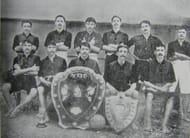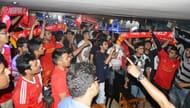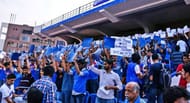Football is without a doubt the most popular sport in this planet. More than 200 countries have taken up the beautiful game over the years and its fan following is widespread. India is no exception to this theory as the several thousands of Indians follow and support the game ardently.
Football is being played in India for more than 100 years now. Asia’s oldest football club Mohun Bagan was founded in Kolkata in 1889 much before the emergence of Premier League giants Liverpool FC. Durand Cup which is played in India was started in the year 1888. It is the oldest football competition in Asia and the third oldest tournament in the world after FA Cup and Scottish Cup.
History of football in India
Indian football’s first major glory tracks back almost a 100 years from now when Kolkata’s Mohun Bagan had defeated a British side East Yorkshire Regiment in 1911 to lift the prestigious IFA Shield for the first time. Just after India’s independence, the Indian football team was invited to play in the FIFA World Cup in 1950 held in Brazil. Due to several unfortunate causes the Indian team did not respond to the invitation and thus missed out a golden opportunity to participate in the biggest sporting event of the world.
Till 1962, India were one of the strongest teams in the continent and were considered to be an upcoming force in the footballing world. Unfortunately, the untimely demise of India’s greatest ever coach Syed Abdul Rahim stagnated India’s progress and since then the standards have just declined.
The era under Rahim is considered to be the ‘Golden-age’ for Indian football as he led India to the semi-final of the Melbourne Olympics in 1956. In the process, India became the first Asian country to achieve this feat. The team also won Asian Games in 1951 and also in 1962 under Rahim’s guidance.
We currently stand 141st in the FIFA rankings and are nowhere close to even make it to the continental level tournaments also.
Among the recent glories in Indian club football, East Bengal had won the ASEAN Cup held in Indonesia in 2003 defeating the then AFC Champions League runner-up side Bec Tero Sasana of Thailand. Also Dempo SC and East Bengal have reached the semi-finals of AFC Cup in the last decade.
Football is gaining a huge following in India
Though India stands nowhere close to the top teams of world football, the craze for the beautiful game is extremely high in our country especially among the youth. Today’s generation is keenly following world football and are passionate about the sport. The likes Chelsea, Manchester United, Liverpool, Arsenal and other European clubs have a considerable fan base in the subcontinent.
Every four years just like any other footballing nation, Indians actively watch the FIFA World Cup and a huge craze is created among the Indian mass regarding the tournament irrespective of our participation.
In several cities in India, the top clubs in the world have fan bases and fan clubs who actively operate. They conduct screenings of games and people in numbers come to watch the matches together. Some of the fan clubs have also been officially recognized by the respective clubs. Even though the Indian youth mostly focuses on international club football, Indian football too is slowly gaining popularity among the mass.
Kolkata is known to be the hub of Indian football, where passion among the fans overflows. The likes of East Bengal and Mohun Bagan have the biggest fan bases in the country and over a lakh people turn up to watch the historic Kolkata derby. The emergence of Indian Super League since last season has successfully turned the focus of Indians towards football. The IMG-Reliance and AIFF’s initiative has been a grand success in its inaugural season.
The grounds remained full house in almost every ISL game. The masses turned up for the matches and Indian people were actually interested in watching and following Indian football.
Emergence of Bengaluru
Talking about Indian youth’s growing interest in Indian football, one cannot afford to miss out the contribution of Bengaluru owned franchise team in I-League, Bengaluru FC. The newbie of Indian football who was born out of Bengaluru in 2013 won the I-League in its inception year. Indian Football witnessed the immense passion of the fans from the Garden city.
The Jindal group owned team did a terrific job in building a considerable amount of fan base of the club. The youth of the city came in numbers in almost every home game to shout out loud for their favourite side. The side has brought a revolution in India and their fans have indeed created an example. They emulate the European fans at the stadium and cheer loudly and passionately for their side. They create an electric atmosphere on match days and their social media presence is noteworthy.
In schools and colleges, a lot of youths are taking up football over most sports due to the fact that one doesn't really need a lot of infrastructure to enjoy “the beautiful game”. In Bengaluru, an amateur league has started called The Amateur League(TAL) where amateur footballers play over weekends.
Organisations such as Horizon sports, TOS sports care, together and many others organise tournaments at corporate levels so as to keep the interest alive in the individuals who want to continue playing the game, without turning professional.
ISL’s Grassroots program
The ISL is another factor for the rise in the sports’ popularity. Leaving aside the huge impact made by the ISL in its inaugural season, the grass-roots program is something that will bear fruit for Indian football in the long run. Mumbai City FC’s grass root program alone includes 50 festivals.
Mumbai have conducted only 15 as of now but have already reached 3000 children. They also have a plan to conduct 15 workshops to train upcoming coaches and trainers. They have reached 375 coaches in 15 workshops already conducted.
Similarly, FC Goa’s program acquired 800 children (between 6-12) from 14 different schools. Indian football needs the support of Indian people especially the youth. It needs the much-needed attention and love from the fans in order to grow.



